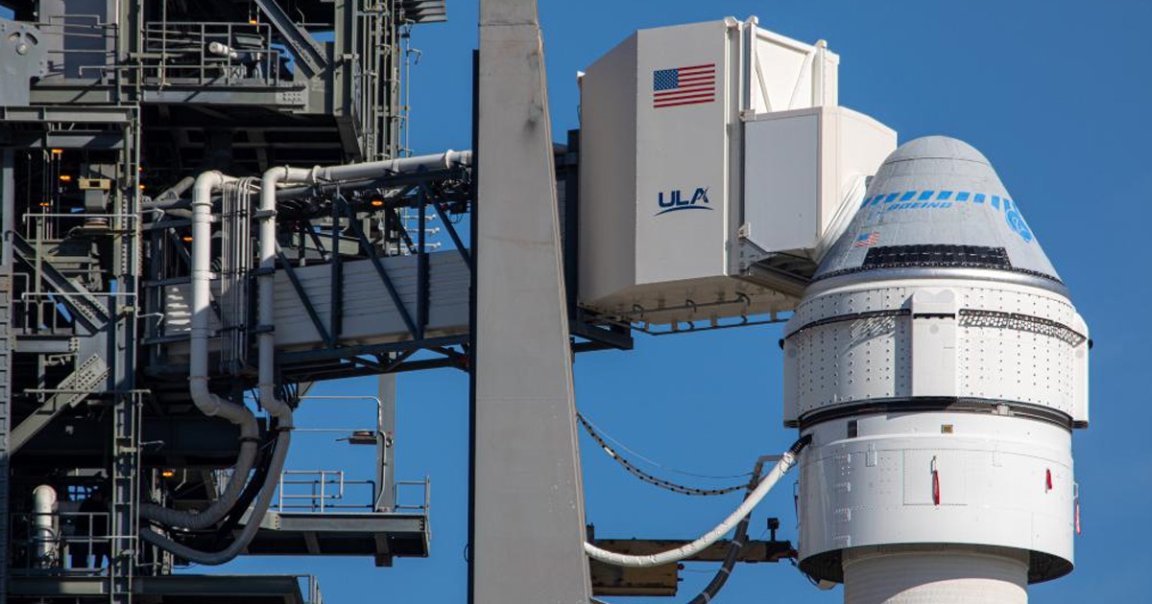
Ready for Liftoff
NASA is sending aerospace giant Boeing’s Starliner passenger spacecraft to the International Space Station early Friday morning from Cape Canaveral, Florida.
The ship is already sitting atop a United Launch Alliance Atlas V rocket at Complex 41. The only passenger on Friday will be “Rosie the Astronaut,” a flight test dummy that is outfitted with a host of sensors to measure critical data — information, Boeing and NASA hope, that will clear the way for the first passenger-carrying flights from US soil since the demise of the Space Shuttle program.
It will otherwise be a pretty empty flight. Starliner can fit up to seven passengers and is designed to stay in orbit for up to seven months and be used up to ten times.
“Being on the cusp of this huge moment in history is really exciting,” Trip Healey, NASA’s mission manager for the test flight, said in a statement.
Race to the ISS
Boeing’s CST-100 Starliner is one of two spacecraft in development as part of the space agency’s Commercial Crew Program — SpaceX’s Crew Dragon passenger spacecraft is the other. While SpaceX has already completed an uncrewed test flight of its Crew Dragon passenger capsule in March, Boeing has yet to send its own crew-carrying spacecraft into orbit — with or without passengers.
Friday’s so-called “Orbital Flight Test” will test the passenger spacecraft’s guidance, navigation, and control systems. It will also attempt to dock with the Space Station to “prove out its autonomous mission capability” according to a NASA press kit.
READ MORE: SpaceX’s biggest rivals are about to test-launch a new astronaut space taxi for the first time [Business Insider]
More on Starliner: Boeing Starliner’s Parachute Fails to Deploy During First Flight